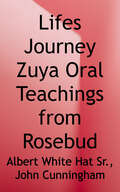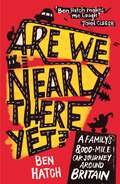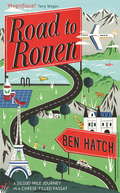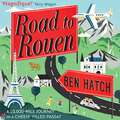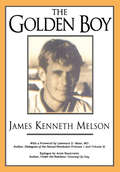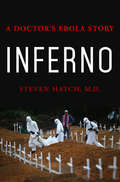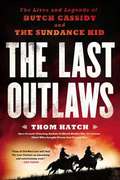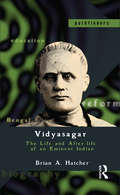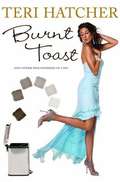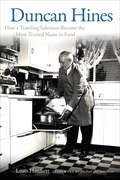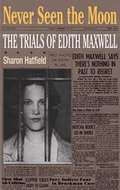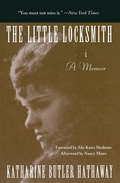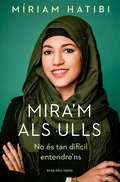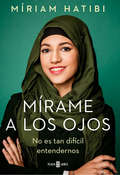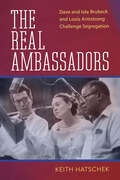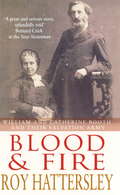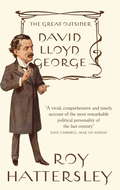- Table View
- List View
Life's Journey - Zuya: Oral Teachings From Rosebud
by Albert White Hat"Our people are very lucky to be here," says Albert White Hat Sr. He has lived through a time when Indians were under government control, were sent to boarding schools, and were not permitted to practice their own rituals. <p><p>Now, although the Lakota people can practice their beliefs openly once again, things have changed, old ways have been forgotten. As a teacher at Sinte Gleska Tribal College in South Dakota, White Hat seeks to preserve the link the Lakota people have with their past. <p><p>In Life's Journey-Zuya, White Hat has collected and translated the stories of medicine men, retaining the simplicity of their language so as not to interpret their words through a Western lens. This is Zuya, oral history that is lived and handed down over the generations. In addition to the stories from the medicine men, White Hat shares stories from his own experience. Through anecdotes he shows not only how the Lakota lifestyle has been altered but also how Lakota words have begun to take on new meanings-meanings that lack their original connotations and generate a different picture of Lakota philosophy. <p><p>White Hat notes that the language, interwoven with history, tells the people where they came from and who they are. By setting the traditions and ceremonies down on paper, with the history of how they evolved, he has secured the meaning of these practices for current and future generations. Written with warmth and humor, Life's Journey-Zuya will be an enjoyable and enlightening read for the Lakota, the scholar, and the general public alike.
Crown of Glory: The Life of Pope Pius XII
by Alden Hatch Seamus WalsheBiography of Pope Pius, XII who was elected Pope of the Roman Catholic Church in March 1939. Pius XII was pope during the turbulent years of World War II through most of the 1950's. This book describes the Pope's efforts to secure peace between the Allied and Axis powers. It also tells of the role of the Vatican in providing protection to displaced refugees and all persecuted persons while trying to prevent the spread of Communism. Image descriptions added.
Are We Nearly There Yet?: A Family's 8,000-Mile Car Journey Around Britain
by Ben HatchWhen Ben and Dinah saw the advert looking for a husband and wife team with young kids to write a guidebook about family travel around Britain, they jumped at the chance. They embark on a mad-cap five-month trip, embracing the freedom of the open road with a spirit of discovery and an industrial supply of baby wipes.
Are We Nearly There Yet?: A Family's 8,000-Mile Car Journey Around Britain
by Ben HatchWhen Ben and Dinah saw the advert looking for a husband and wife team with young kids to write a guidebook about family travel around Britain, they jumped at the chance. They embark on a mad-cap five-month trip, embracing the freedom of the open road with a spirit of discovery and an industrial supply of baby wipes.
Road to Rouen
by Ben HatchFrom the bestselling author of ARE WE NEARLY THERE YET? (Radio 2 Book of the Year & voted Amazon Customers' Fave Kindle Read 2011) comes a new hilarious and touching story of travel chaos.Chosen as one of Amazon's Best Kindle Books of 2013 Ben Hatch is on the road again. Commissioned to write a guidebook about France (despite not speaking any French) he sets off with visions of relaxing chateaux and refined dining. Ten thousand miles later his family's been attacked by a donkey, had a run-in with a death-cult and, after a near drowning and a calamitous wedding experience involving a British spy, his own marriage is in jeopardy. A combination of obsessions about mosquitoes, French gravel and vegetable theme parks mean it's a bumpy ride as Ben takes a stand against tyrannical French pool attendants, finds himself running with the bulls in Pamplona and almost starring in a snuff movie after a near fatal decision to climb into a millionaire's Chevrolet Blazer.Funny and poignant, Road to Rouen asks important questions about life, marriage and whether it's ever acceptable to tape baguette to your children's legs to smuggle lunch into Disneyland Paris.
Road to Rouen
by Ben HatchFrom the bestselling author of ARE WE NEARLY THERE YET? (Radio 2 Book of the Year & voted Amazon Customers' Fave Kindle Read 2011) comes a new hilarious and touching story of travel chaos.Chosen as one of Amazon's Best Kindle Books of 2013 Ben Hatch is on the road again. Commissioned to write a guidebook about France (despite not speaking any French) he sets off with visions of relaxing chateaux and refined dining. Ten thousand miles later his family's been attacked by a donkey, had a run-in with a death-cult and, after a near drowning and a calamitous wedding experience involving a British spy, his own marriage is in jeopardy. A combination of obsessions about mosquitoes, French gravel and vegetable theme parks mean it's a bumpy ride as Ben takes a stand against tyrannical French pool attendants, finds himself running with the bulls in Pamplona and almost starring in a snuff movie after a near fatal decision to climb into a millionaire's Chevrolet Blazer.Funny and poignant, Road to Rouen asks important questions about life, marriage and whether it's ever acceptable to tape baguette to your children's legs to smuggle lunch into Disneyland Paris.
Road to Rouen
by Ben HatchBen Hatch is on the road again. Commissioned to write a guidebook about France (despite not speaking any French) he sets off with visions of relaxing chateaux and refined dining. Ten thousand miles later his family's been attacked by a donkey, had a run-in with a death-culti and, after a near drowning and a calamitous wedding experience involving a British spy, his own marriage is in jeopardy. A combination of obsessions about mosquitoes, French gravel and vegetable theme parks mean it's a bumpy ride as Ben takes a stand against tyrannical French pool attendants, finds himself running with the bulls in Pamplona and almost starring in a snuff movie after a near fatal decision to climb into a millionaire's Chevrolet Blazer.Funny and poignant, Road to Rouen asks important questions about life, marriage and whether it's ever acceptable to tape baguette to your children's legs to smuggle lunch into Disneyland Paris.(P)2013 Headline Digital
The Golden Boy
by Robert HatchThis is the first autobiography to be published by The Haworth Press.This is the first autobiography to be published by Harrington Park Press.The place is New York City. The time is the decade before the plague of AIDS. Thousands of gay men were living a free-wheeling lifestyle of club hopping, “score” hunting, sex without fear, and upward mobility. To none did The Big Apple offer greater rewards than to those young men who had the envied “male model” look.Author James Melson belonged to this exclusive clique: he was tall, blond, muscular, and very “straight looking.” He was a model at 19, and by 25, was a highly successful Wall Street banker. His good looks offered him immediate entry into exclusive clubs and onto the sexual fast track with actors, male models, and other members of the “Clique.”The author brings you behind the scenes into the lifestyle of the handsome “Clique”--providing details of the vigorous and entertaining excitement of the times. He exposes--for one of the few times in print--the lesser-known attitudes of the “Clique” and their disdain for “ugly faggots,” their obsession with strictly the chic and glamorous, and the fast lane life of partying and sex.For 200 pages, the reader is brought back to the era that for many older readers is just a memory, and for younger readers a time they never knew--when to be a “Golden Boy” was to be a prince, and sex was only fun and games.The Golden Boy autobiography ends when the author is diagnosed with AIDS, abandoned by a lover and friends, and left to look back on his life with a growing perspective.The role of “good looks” and people with AIDS is rarely talked about, particularly by gay survivors whose lesser appeal was once perhaps a curse but then ultimately their saving grace. This is not just another AIDS autobiography but a document dealing indirectly with this fact of life. The autobiography is introduced by Larry Mass, MD, an internationally recognized social historian/physician who examines the “Culture of Narcissism” in that era. Arnie Kantrowitz then presents an astonishingly frank and perhaps shocking Epilogue which will have many readers wanting to re-read the book.
Inferno: A Doctor's Ebola Story
by Steven Hatch"Hatch packs a wealth of knowledge into the book...poignant." -Associated PressDr. Steven Hatch, an infectious disease specialist, first came to Liberia in November 2013 to work at a hospital in Monrovia. Six months later, several of the physicians he had served with were dead or unable to work, and Ebola had become a world health emergency. Inferno is his account of the epidemic that nearly consumed a nation, as well as its deeper origins.Hatch returned with the aid organization International Medical Corps to help establish an Ebola Treatment Unit. Alongside a devoted staff of expats and Liberians in a hastily constructed facility nestled into the jungle, Hatch witnessed the unit's physicians, nurses, other caregivers, and patients selflessly helping others, preserving hope in the face of fear, and maintaining dignity across the divide of health and illness. And, over repeated visits during the course of the outbreak, Hatch came to understand the Ebola catastrophe not only as a contagious virus but as a product of Liberia's violent history and America's role in it.Powerful and clear-eyed, Inferno not only explores a deadly virus and an afflicted country, but also reveals how the Ebola outbreak stoked nativist anxieties that were exploited for political gain in the United States and around the world. In telling one doctor's story, Inferno demonstrates how generations of inequality left Liberia vulnerable to crisis, and how similar circumstances might fuel another plague elsewhere. By understanding and alleviating those circumstances, Hatch writes, we may help smother the fire next time.
The Last Outlaws: The Lives and Legends of Butch Cassidy and the Sundance Kid
by Thom HatchThe Old West was coming to an end. Two legendary outlaws refused to go with it. As leaders of the Wild Bunch, Butch Cassidy and the Sundance Kid executed the most daring bank and train robberies of their day. For several years at the end of the 1890s, the two friends, along with a revolving band of thieves, eluded law enforcement while stealing from the rich bankers and Eastern railroad corporations who exploited Western land...until they rode headlong into the twentieth century. In The Last Outlaws, Thom Hatch brings these memorable characters to life like never before. From their early holdup attempts to that fateful day in Bolivia, Hatch draws on a wealth of fresh research to go beyond the myth and provide a compelling new look at these legends of the Wild West. Includes Photographs
Vidyasagar: The Life and After-life of an Eminent Indian (Pathfinders)
by Brian A. HatcherThis book offers a new interpretation of the life and legacy of the Indian reformer and intellectual, Ishvarchandra Vidyasagar (1820–91). Drawing upon autobiography, biography, secondary criticism and a range of Vidyasagar’s original writings in Bengali, the book interrogates the role of history, memory and controversy, and emphasises the key challenge of pinning down the identity of an enigmatic and multi-faceted figure. By examining lesser-known works of Vidyasagar (including several pseudonymous and posthumous works) alongside the evidence of his public career, the author calls attention to the colonial transformation of intellectual and social life, the nature of life writing, the limits of standard biographies and the problem of modern Indian identity as such. Based on decades of research and an original perspective, this book will be especially useful to scholars of modern Indian history, biographical studies, comparative literature and those interested in Bengal.
Burnt Toast and Other Philosophies of Life
by Teri HatcherA funny, intimate, uplifting portrait of one woman's daily struggles and successes on the road to living an inspired life.
Duncan Hines: How a Traveling Salesman Became the Most Trusted Name in Food
by Louis HatchettDuncan Hines (1880--1959) may be best known for the cake mixes, baked goods, and bread products that bear his name, but most people forget that he was a real person and not just a fictitious figure invented for the brand. America's pioneer restaurant critic, Hines discovered his passion while working as a traveling salesman during the 1920s and 1930s -- a time when food standards were poorly enforced and safety was a constant concern. He traveled across America discovering restaurants and offering his recommendations to readers in his best-selling compilation Adventures in Good Eating (1935). The success of this work and of his subsequent publications led Hines to manufacture the extremely popular food products that we still enjoy today.In Duncan Hines, author Louis Hatchett explores the story of the man, from his humble beginnings in Bowling Green, Kentucky, to his lucrative licensing deal with Proctor & Gamble. Following the successful debut of his restaurant guide, Hines published his first cookbook, Adventures in Good Cooking (1939), at the age of 59 and followed it with The Dessert Book (1955). These culinary classics included recipes from many of the establishments he visited on his travels, favorites handed down through his family for generations, and new dishes that contained unusual ingredients for the era. Many of the recipes served as inspiration for mixes that eventually became available under the Duncan Hines brand.This authoritative biography is a comprehensive account of the life and legacy of a savvy businessman, American icon, and an often-overlooked culinary pioneer whose love of good food led to his name becoming a grocery shelf favorite. Hatchett offers insightful commentary into the man behind the cake mix boxes and how he paved the way for many others like him.
Never Seen the Moon: The Trials of Edith Maxwell
by Sharon HatfieldNever Seen the Moon carefully yet lucidly recreates a young woman's wild ride through the American legal system. In 1935, free-spirited young teacher Edith Maxwell and her mother were indicted for murdering Edith's conservative and domineering father, Trigg, late one July night in their Wise County, Virginia, home. Edith claimed her father had tried to whip her for staying out late. She said that she had defended herself by striking back with a high-heeled shoe, thus earning herself the sobriquet "slipper slayer." Immediately granted celebrity status by the powerful Hearst press, Maxwell was also championed as a martyr by advocates of women's causes. National news magazines and even detective magazines picked up her story, Warner Brothers created a screen version, and Eleanor Roosevelt helped secure her early release from prison. Sharon Hatfield's brilliant telling of this true-crime story transforms a dusty piece of history into a vibrant thriller. Throughout the narrative, she discusses yellow journalism, the inequities of the jury system, class and gender tensions in a developing region, and a woman's right to defend herself from family violence.
University of Courage: A History of the Hadley School for the Blind
by Donald Wing HathawayA warmly written history by a man who loved his subject and his work with Hadley. "And so as we reach the end of our story, we find ourselves dreaming--as William Allen Hadley once dreamed--of life made more abundant through knowledge, and of hope made reality through perseverance. How strangely life can exceed the boldest dream! Could William Hadley possibly have conceived that his University of Courage would one day reach out to blind persons all over the earth in a true universality of courage, within a world of work in which all may share? Can we today set limits on horizons that only continue to expand?
The Little Locksmith: A Memoir
by Katharine Butler HathawayFirst published in 1942 and reprinted here by the Feminist Press, this is the deeply honest memoir of Katharine Butler, who was disabled from childhood due to tuberculosis of the spine. Butler describes her bedridden childhood and her emergence as a teenager with a notably different-looking body. She writes openly of her longing for sexual love and her sense that it was forever denied to her because of her difference. Much of the book concerns the author's renovation of and hopes for a house in Castine on the coast of Maine, which she dreamed would become a house for children, artists, and lovers. Nancy Mairs' afterword provides fascinating information about the author's life.
The Little Locksmith: A Memoir (Physically Handicapped In Society Ser.)
by Katharine Butler HathawayThis early 20th century memoir of a woman&’s faith in the face of debilitating disease is a &“remarkably un-self-pitying book remains poignant and truthful&” (Publishers Weekly). &“You must not miss it . . . It is the kind of book that cannot come into being without great living and great suffering and a rare spirit behind it.&” —The New York Times In 1895, a specialist straps five-year-old Katharine Hathaway, then suffering from spinal tuberculosis, to a board with halters and pulleys in a failed attempt to prevent her from becoming a &“hunchback&” like the &“little locksmith&” who does odd jobs at her family&’s home. Forced to endure her confinement for ten years, Katharine remains immobile until age fifteen, only to find that none of it has prevented her from developing a deformity of her own. The Little Locksmith charts Katharine&’s struggle to transcend physical limitations and embrace her life, her body, and herself. Her spirit and courage prevail as she expands her world far beyond the boundaries prescribed by her family and society: she attends Radcliffe College, forms deep friendships, begins to write, and in 1921, purchases a house of her own that she fashions into a space for guests, lovers, and artists. Revealing and inspirational, The Little Locksmith stands as a testimony to Katharine&’s aspirations and desires—for independence, love, and the pursuit of her art. &“A powerful revelation of spiritual truth&” —The Boston Globe &“Katharine Butler Hathaway . . . was the kind of heroine whose deeds are rarely chronicled . . . [She took] a life which fate had cast in the mold of a frightful tragedy and redesign[ed] it into a quiet, modest work of art.&” —The New Yorker
Harriet Nahanee: Keeper of the Land / Bridging Two Worlds: The Story of Annie Dodge Wauneka (Fountas & Pinnell Classroom, Guided Reading Grade 6)
by Michele HathawayNIMAC-sourced textbook
Mira'm als ulls: No és tan difícil entendre'ns
by Míriam Hatibi«Vull per als meus fills un món que aposti per la convivència, la diversitat, la pluralitat i el diàleg, sense que ningú hagi de donar explicacions pels seus cognoms o les seves creences.» <P><P>Míriam Hatibi a La Vanguardia Què li passa al món? Què ens passa a nosaltres? A partir de la seva pròpia experiència, Míriam Hatibi relata, en primera persona, el descobriment de «ser diferent» i la construcció d'una identitat plural. En un to proper, amb enorme intel·ligència i agudesa, desmunta tòpics i estereotips sobre la diversitat, i reflexiona sobre els conceptes d'integració, assimilació, tolerància i convivència. En un moment en què les identitats han estat sacsejades per una profunda crisi, la crida de l'autora a obrir els ulls i a descobrir a l'altre -i alhora a nosaltres mateixos- és més necessària que mai. Perquè és urgent començar el diàleg que permetrà que tots ens entenguem. Davant el discurs del racisme i de l'odi, Míriam Hatibi deconstrueix el prejudici que pot arribar a fracturar innecessàriament la societat i alça barreres que són únicament mentals. I Mira'm als ulls constitueix, sobretot, la ferma defensa d'una societat oberta, presidida per l'intercanvi cultural i el respecte, que aposti per la convivència.
Mírame a los ojos: No es tan difícil entendernos
by Míriam Hatibi«Quiero para mis hijos un mundo que apueste por la convivencia, la diversidad, la pluralidad y el diálogo, sin que nadie tenga que dar explicaciones por sus apellidos o creencias.»Míriam Hatibi en La Vanguardia ¿Qué le pasa al mundo? ¿Qué nos pasa a nosotros? <P><P>A partir de su propia experiencia, Míriam Hatibi relata en primera persona el descubrimiento de «ser diferente» y la construcción de una identidad plural. En un tono cercano, con inteligencia y agudeza, Hatibi desmonta tópicos y estereotipos sobre la diversidad, y reflexiona sobre los conceptos de integración y asimilación, tolerancia y convivencia. En un momento en que las identidades se ven sacudidas por una profunda crisis, este llamamiento a abrir los ojos y a descubrir al otro -y a la vez a nosotros mismos- es más necesario que nunca. Urge iniciar el diálogo que nos permitirá entendernos. Frente al discurso del racismo y del odio, Míriam Hatibi deconstruye el prejuicio que fractura a la sociedad alzando barreras mentales. <P><P>Mírame a los ojos es, sobre todo, la firme defensa de una sociedad abierta, basada en el intercambio cultural y el respeto, y que apueste por la convivencia. «Solo cuando sabes quién eres y cómo te defines, puedes decidir hacia dónde vas, diferenciar lo que está bien de lo que está mal, e incluso lo que te gusta y lo que no, lo que aceptas y lo que rechazas. »Se dice que los demás son el espejo en el que nos reflejamos. <P><P>Si yo me miro en mi propio espejo, soy MíriamHatibi, de Barcelona, ilerdense, española, catalana, marroquí y musulmana. Si me miro en el espejo de los demás, soy Míriam, inmigrante de segunda generación, como si la condición de inmigrante se pudiera heredar. Nuestros padres vinieron aquí a ganarse la vida sin hacer ruido. En cambio los hijos de los inmigrantes somos activos y reivindicativos. »Suelo decir que si fuera un hombre blanco disfrutaría de mucho más tiempo libre porque no tendría que estar justificándome constantemente. Pero también sé que si no hablo, hablarán por mí, y cuando hablan por mí, ya he visto cómo va la cosa. Por eso decido tomar la palabra.»
The Real Ambassadors: Dave and Iola Brubeck and Louis Armstrong Challenge Segregation (American Made Music Series)
by Keith HatschekWinner of the 2023 ASCAP Foundation Deems Taylor/Virgil Thomson Book AwardRecipient of a 2023 Certificate of Merit for Best Historical Research in Recorded Jazz from the Association for Recorded Sound CollectionsKeith Hatschek tells the story of three determined artists: Louis Armstrong, Dave Brubeck, and Iola Brubeck and the stand they took against segregation by writing and performing a jazz musical titled The Real Ambassadors. First conceived by the Brubecks in 1956, the musical’s journey to the stage for its 1962 premiere tracks extraordinary twists and turns across the backdrop of the civil rights movement. A variety of colorful characters, from Broadway impresarios to gang-connected managers, surface in the compelling storyline. During the Cold War, the US State Department enlisted some of America’s greatest musicians to serve as jazz ambassadors, touring the world to trumpet a so-called “free society.” Honored as celebrities abroad, the jazz ambassadors, who were overwhelmingly African Americans, returned home to racial discrimination and deferred dreams. The Brubecks used this double standard as the central message for the musical, deploying humor and pathos to share perspectives on American values. On September 23, 1962, The Real Ambassadors’s stunning debut moved a packed arena at the Monterey Jazz Festival to laughter, joy, and tears. Although critics unanimously hailed the performance, it sadly became a footnote in cast members’ bios. The enormous cost of reassembling the star-studded cast made the creation impossible to stage and tour. However, The Real Ambassadors: Dave and Iola Brubeck and Louis Armstrong Challenge Segregation caps this jazz story by detailing how the show was triumphantly revived in 2013 by the Detroit Jazz Festival and in 2014 by Jazz at Lincoln Center. This reaffirmed the musical’s place as an integral part of America’s jazz history and served as an important reminder of how artists’ voices are a powerful force for social change.
Blood and Fire: William and Catherine Booth and the Salvation Army
by Roy HattersleyAn uneducated youth, William Booth left home in 1849 at the age of twenty to preach the gospel for the New Methodist Connexion. Six years later he founded a new religious movement which succeeded to such a degree that the Salvation Army (which it became) is now a worldwide operation with massive membership.But that is only part of Booth's importance and heritage. In many ways his story is also that of the Victorian poor, as he and his wife Catherine made it their lives' work to battle against the poverty and deprivation which were endemic in the mid- to late 1800s. Indeed, it was Catherine who, although a chronic invalid, inspired the Army's social policy and attitude to female authority. Her campaign against child prostitution resulted in the age of consent being raised and it was Catherine who, dying of cancer, encouraged William to clear the slums -- In Darkest England, The Way Out. Roy Hattersley's masterful dual biography is not just the story of two fascinating lives but a portrait of an integral part of our history.
Blood and Fire: William and Catherine Booth and the Salvation Army
by Roy HattersleyAn uneducated youth, William Booth left home in 1849 at the age of twenty to preach the gospel for the New Methodist Connexion. Six years later he founded a new religious movement which succeeded to such a degree that the Salvation Army (which it became) is now a worldwide operation with massive membership.But that is only part of Booth's importance and heritage. In many ways his story is also that of the Victorian poor, as he and his wife Catherine made it their lives' work to battle against the poverty and deprivation which were endemic in the mid- to late 1800s. Indeed, it was Catherine who, although a chronic invalid, inspired the Army's social policy and attitude to female authority. Her campaign against child prostitution resulted in the age of consent being raised and it was Catherine who, dying of cancer, encouraged William to clear the slums -- In Darkest England, The Way Out. Roy Hattersley's masterful dual biography is not just the story of two fascinating lives but a portrait of an integral part of our history.
David Lloyd George: The Great Outsider
by Roy HattersleyA Welshman among the English, a nonconformist among Anglicans and a self-made man in the patrician corridors of power, David Lloyd George, the last Liberal Prime Minister of Great Britain, was the founding father of the Welfare State and was as great a peacetime leader as Churchill was in war. In this fascinating biography of an authentic radical, Roy Hattersley charts the great reforms - the first old age pension, sick pay and unemployment benefit - of which Lloyd George was architect, and also sheds light on the complexities of a man who was both a tireless champion of the poor, and a restless philanderer who was addicted to living dangerously.
David Lloyd George: The Great Outsider
by Roy HattersleyA Welshman among the English, a nonconformist among Anglicans and a self-made man in the patrician corridors of power, David Lloyd George, the last Liberal Prime Minister of Great Britain, was the founding father of the Welfare State and was as great a peacetime leader as Churchill was in war. In this fascinating biography of an authentic radical, Roy Hattersley charts the great reforms - the first old age pension, sick pay and unemployment benefit - of which Lloyd George was architect, and also sheds light on the complexities of a man who was both a tireless champion of the poor, and a restless philanderer who was addicted to living dangerously.
